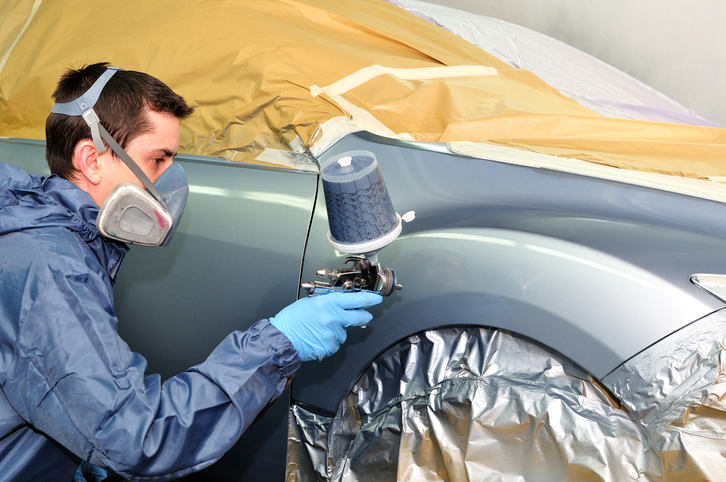Thinking of Becoming an Auto Body Technician? Here are 5 Common Paint Mistakes to Know About

The paint job is often one of the first aspects of a car to be damaged in a collision. Even a minor bump or scratch can cause a frustrating amount of damage to the paint, resulting in visible nicks, cracks, and discolouration. Paint jobs are typically left to the professionals to manage. Even more experienced auto fans may balk at touching up a paint job on one of their beloved vehicles.
There are legitimate reasons for this hesitancy. Unless a person has received rigorous and proper auto body training, there are many things that can go wrong with a simple paint job. This type of paint application differs significantly from painting a wall or painting nails. Auto paint jobs are in-depth, multi-staged technical processes that, when done incorrectly, require significant revision. Read on for five examples of common mistakes that non-professionals make when painting an auto.
Excessive Material Application
One of the key mistakes untrained people make when attempting to paint a vehicle is spraying on too much material. Applying an excess of wet coats can cause several different problems. One of these issues is what’s referred to as runs or sags in the paint, when it dries in a runny, uneven layer.
Another issue that can result from excessive application is referred to as “orange peel”, when the finished coat resembles the peel of an orange due to its uneven texture. Additionally, the paint may dry in a way where cracks of various sizes appear, which is referred to as crackling or wrinkling.
Not Preparing the Surface Properly
Professionals who are sufficiently trained under auto body technician courses know that the car’s surface needs to be thoroughly prepped before paint is applied. Without this training, the surface may be prepared improperly prior to application.

Adding prep solvent to the surface of the car before painting can help remove oil, dirt, car wax, and other contaminants. An improperly prepped surface can lead to paint that crackles when imperfections get stuck under the layer of paint. Contaminants on the surface can also lead to what’s called “fish eyes”. These tiny circular bumps in the coat are an aesthetic nightmare.
Painting in Excessively Hot, Cold, or Humid Environments
When becoming an auto body technician, you’ll see that paint should ideally only be applied to cars under specific environmental conditions. Environments should stay within room temperature, and should not be overly humid. Environments lower than 13 degrees or hotter than 27 degrees should be avoided.
Paint behaviour changes depending on the temperature and the level of humidity. Excessive heat and humidity can cause unwanted crackling in the paint. Additionally, excessive heat or excessive cold can result in issues like blotches, bubbling, and discolouration.
Using an Incorrect Spray Gun Type or Technique
The tools used to apply paint should be well-suited to the paint type, paint job, and environmental conditions. The technique used to apply the paint should also be appropriate. Using an incorrect spray gun, an incorrect air cap or fluid tip, or an incorrect amount of pressure can cause the “orange peel” phenomenon.
Using an incorrect spray gun technique can also result in a shoddy coat of paint. The position of the gun tip and speed at which the person passes the gun over the body should all be accurate, to avoid a messy or undesirable end result.
Auto Body Technicians Don’t Use the Wrong Paint
A common but unexpected mistake that untrained auto enthusiasts make when attempting to paint a car is selecting the wrong shade of paint. It can be unpredictably difficult to choose paint with the naked eye that perfectly matches the car’s coat.

The best way to avoid this and all other mistakes is by having a trained professional apply the paint. Attending a course in auto body repair can teach you in a deep and diligent way how to properly apply paint to vehicles, among other things.
Do you want to learn more about painting in auto body repair technician courses?
Contact Automotive Training Centres for more information!

